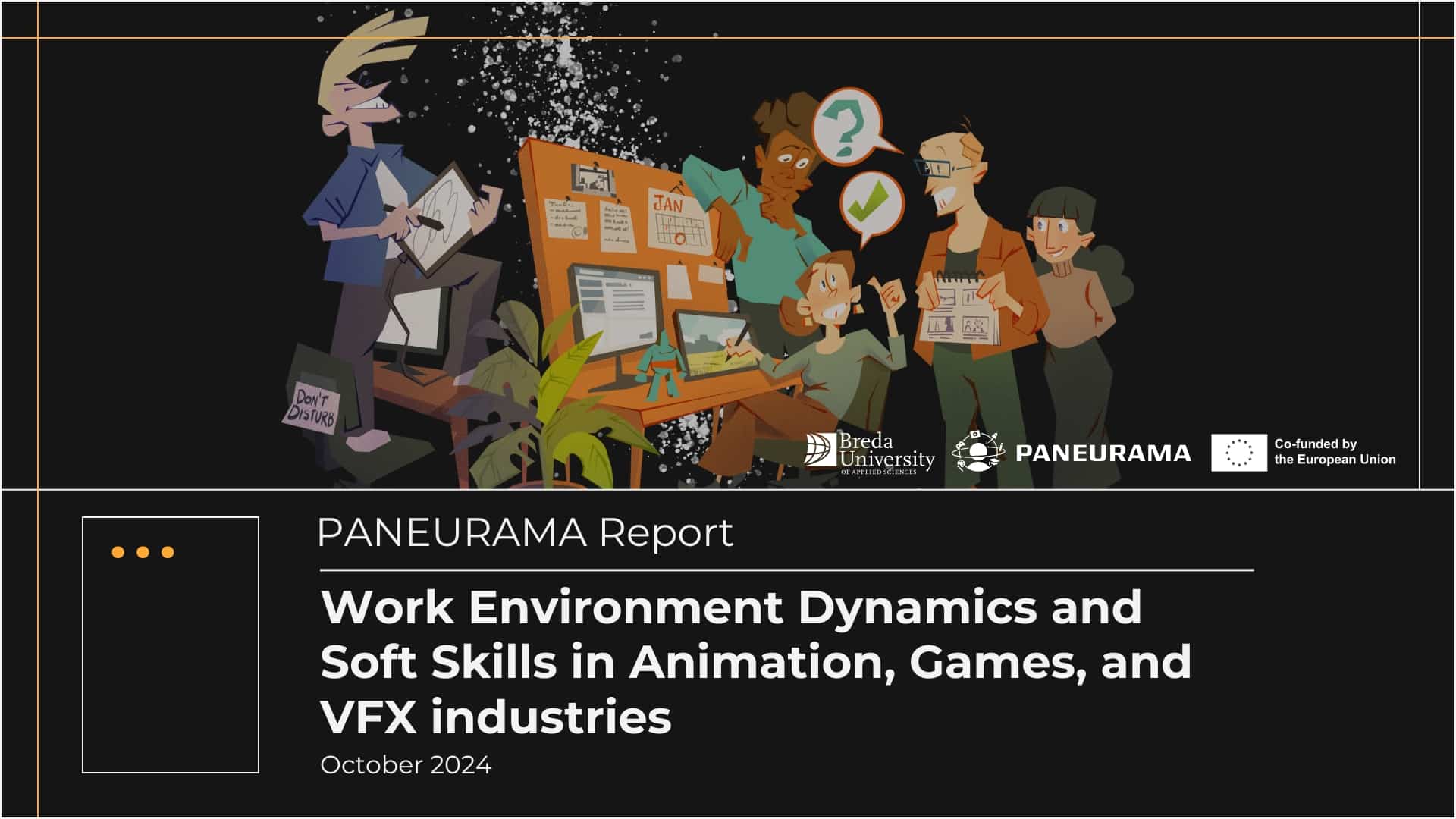We asked our team from the PANEURAMA project to briefly introduce themselves, share the areas they are working on, and respond to some questions addressing current challenges and opportunities in the industry.
We hope you will enjoy reading their insights. The fourth interviewee is Rémy Sohier from Université Paris 8 and Arts et Technologies de L’image.

Rémy Sohier
Lecturer
@Université Paris 8, Arts et Technologies de l’image
Q: Can you provide a brief overview of yourself, your professional experience, and the institution you work in?
I am a lecturer at the University of Paris 8, where I specialize in researching the intersection of arts and technologies. My current focus involves conducting interviews within the animation, VFX, and video game studios in France, contributing to a broader understanding of the relationships between these industries.
Over the past five years, I have played a pivotal role in the creation of approximately twenty video games with the Alineaire collective. These games have not only showcased artistic innovation but have also gained international exposure.
In addition to my research and creative endeavours, I serve as a trainer in the fields of 3D design, C# programming, and GLSL (Graphics Library Shading Language). My expertise extends to real-time optimization techniques, providing valuable insights to students and professionals in these domains.
Q: In recent years, what do you consider the most significant changes within creative digital education? How has it affected your institution? Could you give some examples?
In recent years, digital education at Paris 8 has seen notable changes. The rapid shift to online learning during the pandemic highlighted the importance of in-person interactions for quality teaching. We continue to value experimentation, adapting swiftly to technology while recognizing the irreplaceable role of face-to-face engagement. Additionally, there’s a growing emphasis on interdisciplinary approaches, reflecting the evolving demands of the creative industry. We’ve integrated immersive technologies like AR and VR into our curriculum, fostering innovation in line with industry trends.
AI is an important subject for reflection on our side. We strongly encourage our students to get to grips with these tools and understand them in depth, not just as users.
Q: What, in your opinion, are the primary challenges currently faced by creative digital education and how is it affecting your institution? Could you give some examples?
Primary challenges for creative digital education at Paris 8 include:
- Technological Pace: Keeping educators consistently updated with rapid technological innovations requires ongoing training.
- Industry Relevance: Continuous monitoring of the professional sector is essential to align the curriculum with industry needs.
- Ecological Shifts: Adapting to new environmental considerations in digital creation tools and consumption poses challenges and opportunities.
- Budget Constraints: Escalating costs for hardware and software impact the institution’s ability to provide state-of-the-art tools while managing financial resources effectively.
Q: Could you please identify the most significant opportunities for creative digital education and possible ways to address them?
The most significant opportunities for creative digital education lie in striking a balance between exploring new trends and maintaining fundamental principles. There is often a rush towards emerging opportunities, such as AI, NFTs, and metaverses, hailed as revolutionary changes. However, it is crucial to recognize that their real integration into society is a slower process than marketing narratives suggest.
To capitalize on these opportunities, I advocate for a cautious approach, avoiding temporary trends and focusing on a deep understanding of the reality of the digital landscape. This involves emphasizing fundamentals like programming, principles, and algorithms, ensuring a solid foundation to navigate technological advancements while staying connected to the practical needs of the industry.
Q: What do you think are the most important hard skills in the area of creative digital education in which you are working?
In the realm of creative digital education, the most vital hard skills encompass a robust understanding of programming languages, staying close to the fundamentals and principles governing design and arts, and the application of algorithms to solve complex creative challenges or apply them within creative technical tools.
Q: What advice could you give to industry professionals to foster closer collaboration and partnership with educational institutions? Could you share some examples?
Building closer ties between industry and educational institutions necessitates active engagement. This involves participating in academic forums, facilitating site visits for researchers to observe processes firsthand, and actively exchanging knowledge to bridge the gap between theory and industry practice.
Q: What do you think creative digital educational institutions should focus more on to better prepare young artists for their careers?
To equip emerging artists for successful careers, creative digital educational institutions should prioritize securing reputable industry placements, implementing immersive work-linked training programs, organizing sessions and classes led by seasoned professionals to impart practical insights, and maintaining a deep concurrent understanding of the technical landscape.
Q: What do you think are the most important soft skills needed for students and graduates who are going to work in creative digital industries? Could you give some advice on how to develop them?
Within creative digital industries, essential soft skills encompass a professional demeanour marked by rigour, discipline, and active listening.
Additionally, fostering a continuous learning mindset, knowing how to ask questions, and the ability to work autonomously are fundamental traits for graduates navigating this industry.
Q: Could you provide suggestions or recommendations for students and graduates aiming to succeed in the current market?
A student’s first network is their school.
So the choice of school is the most important factor in determining a student’s future. It is the school’s responsibility to improve its network of companies and to offer its students guarantees of professional integration.
Then there is the alumni network. The longer a school has been in existence, the bigger its network. You need to nurture it and meet alumni. The industry is a small world where everyone knows everyone else and it’s easier to get in by recommendation.
Then there are unsolicited applications. Here, it would be best if you had a very good portfolio and the ability to sell yourself.

